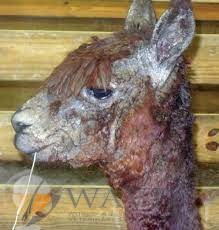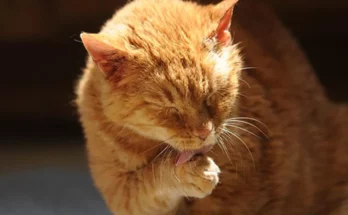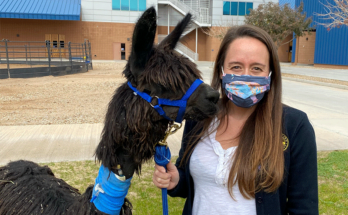This skin condition is familiar to many livestock owners and is known by many names: ‘cutaneous streptothrichosis’ (cattle, goats, and horses), ‘rain-scald’, ‘mud rash’ or ‘mud fever’ (horses), ‘lumpy wool’ (sheep), ‘strawberry foot rot’ (sheep and cattle) and is a causative factor in ‘pastern dermatitis’ (horses).
It is caused by the bacterium Dermatophilus congolensis and can result in severe skin infections indicated by the formation of crusty scabs containing the microorganism. In alpacas, these lesions are most common on the back and wet, clumped wool may be found that is removable in clumps.
The underlying skin is often reddened and weeping.
The bacterium exists in two forms: filamentous and motile zoospores.
The zoospore is resistant to heat and being dried out and as it is the dormant phase, it can survive in infected scabs for months. Transmission between animals is known to occur by direct contact but contaminated environments may also be an indirect means.
Veterinary consultation is essential as the treatment will include antibiotics – fortunately the bacterium is sensitive a wide range. Povidone iodine shampoos or chlorhexidine solutions are also useful in clearing up the disease.



